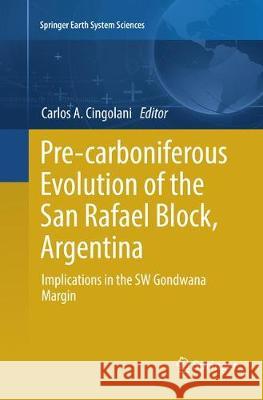Pre-Carboniferous Evolution of the San Rafael Block, Argentina: Implications in the Gondwana Margin » książka
topmenu
Pre-Carboniferous Evolution of the San Rafael Block, Argentina: Implications in the Gondwana Margin
ISBN-13: 9783319843292 / Angielski / Miękka / 2018 / 267 str.
Pre-Carboniferous Evolution of the San Rafael Block, Argentina: Implications in the Gondwana Margin
ISBN-13: 9783319843292 / Angielski / Miękka / 2018 / 267 str.
cena 402,53
(netto: 383,36 VAT: 5%)
Najniższa cena z 30 dni: 385,52
(netto: 383,36 VAT: 5%)
Najniższa cena z 30 dni: 385,52
Termin realizacji zamówienia:
ok. 22 dni roboczych
Bez gwarancji dostawy przed świętami
ok. 22 dni roboczych
Bez gwarancji dostawy przed świętami
Darmowa dostawa!
Kategorie BISAC:
Wydawca:
Springer
Seria wydawnicza:
Język:
Angielski
ISBN-13:
9783319843292
Rok wydania:
2018
Wydanie:
Softcover Repri
Ilość stron:
267
Waga:
0.57 kg
Wymiary:
23.55 x 15.6 x 1.78
Oprawa:
Miękka
Wolumenów:
01











